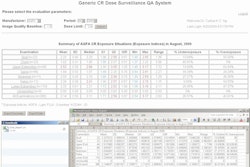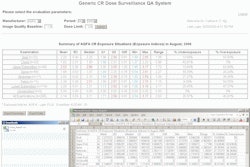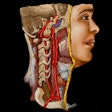Radiology departments in hospitals with pediatric intensive care units (PICUs) should provide 24/7 radiology services, either by onsite staffing 24 hours a day or utilizing a teleradiology service offering pediatric radiology-specific services.
Physicians at Georgetown University Children's Medical Center in Washington, DC, reached this conclusion after conducting a prospective study to assess how interpretation errors by pediatric intensive care physicians (intensivists) affect patient management in a PICU.
Although pediatric intensivists achieved 92.9% accuracy when reading chest x-rays taken in the PICU over a 15-month time period, this wasn't accurate enough, according to clinicians from Georgetown's division of pediatric critical care and pulmonary medicine. Pediatric intensivists recorded three misinterpretations that were later correctly identified by a pediatric radiologist, and these cases required clinically important patient management changes, wrote lead author Dr. Gabriel Hauser, director of the pediatric intensive care unit and vice chairman of the pediatrics department, and colleagues. Their study was published in the Journal of Critical Care (August 13, 2009).
Pediatric intensivists are the first physicians to interpret chest x-rays and make therapeutic decisions based upon their impressions, so the authors conducted a prospective study to determine the accuracy of pediatric intensivists in reading chest x-rays as compared to pediatric radiologists. They also evaluated how misinterpretations affected the diagnosis and management of critically ill children.
Between November 2003 and March 2005, all chest x-rays taken of PICU patients were interpreted by one of five pediatric intensive care specialists with six months to 15 years of postfellowship clinical experience. They recorded findings on a case report form and made patient management decisions based on their initial interpretation of the chest x-rays. Images were subsequently interpreted by a pediatric radiologist, who also used a case report form to note findings in addition to preparing a formal radiology report. A pediatric pulmonologist reviewed cases with discordant opinions.
A total of 1,000 chest x-rays were performed during the study, with 460 chest x-rays of 112 patients meeting the study's criteria of being interpreted within 24 hours by the facility's pediatric radiologist. Another 640 exams were excluded because they were not read within 24 hours by the pediatric radiologist, and instead were interpreted by radiologists who were not participating in the study.
The pediatric radiologist identified 720 abnormal findings in the 460 chest x-rays. Eight exams, or 1.74%, were normal.
The interpreting radiologist and pediatric intensivists who read the exams disagreed in interpretation in 33 cases representing 33 patients. The most frequently missed diagnoses included atelectasis and air space disease (10 cases each), effusion (eight cases), edema (three cases), and pneumonia, air leaks, and lines/tubes (one case each).
The percentage of errors made in stat films, 7.0%, was comparable to the error rate for routine morning films, 7.2%. Prior to the start of the study, pediatric intensivists estimated that their error rate was 10%.
Three of the misinterpreted cases, or 0.65% of the total evaluated, required changes in patient management. This percentage is substantially less than the 5% estimated by Children's Medical Center's pediatric radiologists prior to the start of the study. However, these three misinterpretations made by the pediatric intensive care physicians would have affected the patients' health if they had not been identified by the radiologist, and changes in patient management were immediately initiated.
Cases requiring changes in patient management
|
The authors noted that, despite the small number of interpretation errors, the mistakes could have important clinical, legal, and economic consequences. If the pediatric intensivists had not been well-trained and experienced in reading chest x-rays, due in part to participating in daily radiology rounds with the hospital's pediatric radiologist, the percentage of serious errors could have been higher.
By Cynthia E. Keen
AuntMinnie.com staff writer
September 11, 2009
Copyright © 2009 AuntMinnie.com



















